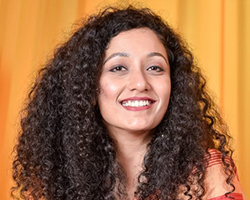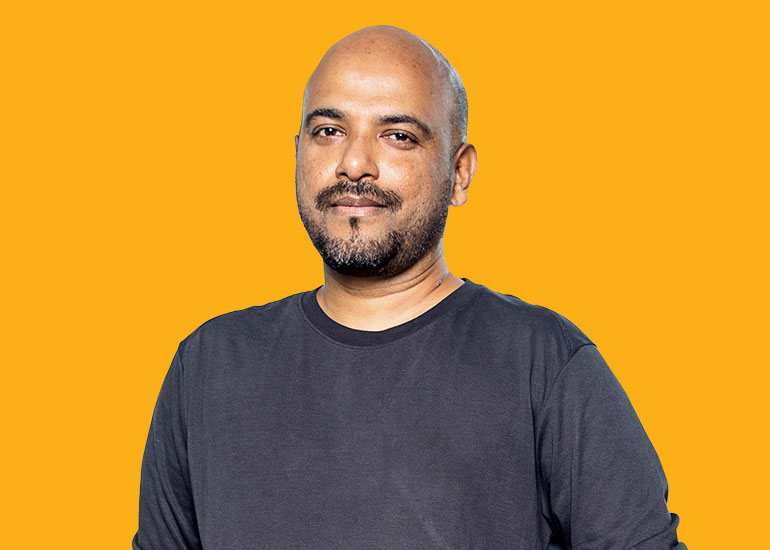Q] You are almost on the verge of celebrating your 10th anniversary. Would you say, Breathless Films has managed to infuse that breath of fresh air in the world of advertising?
We’ve worked with some very big brands and agencies, and if I can marry a brand’s needs with some element of human storytelling, then that gets me excited. We like to look at the diversity of films that we do — sometimes it’s humour, on other occasions it’s emotions, and then some are plain idiotic fun. Getting good scripts and the liberty to make films the way one wants to is success for us.
Q] Every director has a genre that he’s generally known for. What is Vinil Mathew’s brand of ad filmmaking?
I hate being pigeonholed, and that’s what I hate about agencies and clients because they attach genres to directors. When I started, I was given a lot of visual films with style, and never got performance-driven or human stories. But then they discovered that I could do human stories. Now when I tell agencies that I started off doing visual films, they find it hard to believe.
Q] You have worked with brands like Mondelez, Amazon Prime, Nescafe, etc. Which has been your most enjoyable work over the years?
I thoroughly enjoyed my work on Cadbury’s. We created the silk campaign with that ‘Kiss me’ track which is still running. I directed a lot of powerful human stories for Nescafe like ‘The Stammering stand-up comedian’, ‘the RJ’, and ‘the Cartoonist,’ which was Vikrant Massey’s first ad film. Then there is the Airtel ad with Vidya Balan and Madhavan after which the phones at the Airtel call centres were ringing incessantly, hopeful of the next series. Last year, we did a film with Alia Bhatt and Siddhant Chaturvedi for Lays, another one with Rajkumar Rao and also one for Amazon Prime with Manoj Bajpayee which were received well. An all-time favourite is the Imperial Blue ‘Men will be Men’, campaign which we started with Ajay Gahlaut. In fact, the song you hear in the brand’s ads till date is the one I had created. And lastly there was a McDonald’s commercial last year which I liked working on.

Q] On an average, how many ad films do you work on in a year at Breathless Films?
We would be very happy if we did one and a half films in a month. It is an internal target for me and my producer, as our comfort zone lies in doing three films in two months, which gives us enough time to do justice to each project. But that never happens because projects tend to come in clumps, along with dry periods.
Q] We always hear creative agencies complain about how their profit margins went down over the years and how production houses have all the money. Is that the truth? Have the production budgets and your margins gone up significantly over time?
It’s a myth that production houses have huge margins. Let us take a look at inflation and production budgets — in the late 90s the cost of a packet of Maggi noodles was 3 or 4 rupees, and now it’s in double digits. Similarly, look at film budgets then and now. You’ll see that inflation in everything else has gone up by more than 2x, but film budgets are still hovering around the same figures.
Q] How much does making an ad film cost today versus in the 90s?
In the late nineties, people would spend about INR 80 lakhs to 1.2cr. for an A-grade ad film. INR 60-70 lakhs was a reasonable budget at that time for making a decent film. It has probably gone up by about 20 per cent in 20 years. I don’t think we’ve kept pace with the general inflation in the market. What’s interesting is that even with the huge budgets in the late nineties, there were no specialised HODs. You only had a DOP to whom you paid a nominal sum while everything else was done by in-house assistants. But now we have a system where the unions are very strong, and labour gets adequately paid. There are specialized HODs for packshots, casting, art, costume, and every other department. These professionals also get an increment every year. Earlier we used to have in-house flunkies, but now they’re all freelance assistant directors who come only for a specific time and a specific project. So, if you want to keep them longer, you will have to pay more. Therefore, from about two or three big heads in the late nineties, now there are about 25 HODs who are all charging you, additionally you have to pay rights to a whole bunch of people, then the expenses related to making regional versions of the same film get added to the list. So, your costs have gone up by 20x, 30x, but your increment in budgets is hardly 10 to 15%. So, all those components do come in. I wouldn’t say that people are bleeding, but it’s quite tight.
However, because of tight budgets, it becomes very difficult to even get good quality talent because now everybody needs to do far more work to maintain a certain margin, so lack of dedication and commitment become collateral damage. We at Breathless Films still try to give clients exclusive attention, but it has become tough given the budgets we have right now. We have lost the collective team spirit of coming together and creating something good and different. Now it has become so commercialized that everybody’s just clocking their hours. So, I feel like we’ve all become sort of like lawyers in the ad business, which is what we were running away from when it came to films. I miss that part of advertising now.

Q] Nowadays brands spend a lot of money on influencers who need nothing more than a mobile phone to create content. Also, for brands today, TVCs, which to a large extent needed big production houses with fancy equipment to execute, are not the only focus. Has the relevance of production houses gone down?
These are interesting and challenging times. The clients’ advertising budgets are now divided into TV, the internet, social media, outdoor, etc. Earlier it was just TV, Print and Outdoor. They don’t have the budgets to concentrate on that big TVC. But I feel it is a phase. They will invest in some influencers, but so will many other clients. How do you distinguish your brand from another brand that is working with the same influencer? That is when you will need a great idea. You will need a great bunch of writers, a nice location, and a professional cameraman who will add magic to it. When you want to distinguish yourself from what everyone else is doing, you will still have to pay for people who can come in and create that difference.
I remember when initially a lot of OTT or long format production houses wanted to enter advertising, they said, ‘Oh, what we do is so cheap, why is advertising production so expensive?’ They thought that they could kill the fat and do it in a cheaper way. But when they started delivering the quality which clients were expecting, their costs were the same as ours. Because then you can’t get away with shortcuts. In future, everyone will co-exist, but the client will need to see whether he or she is getting a hundred percent guarantee on the money being spent. After all, why do certain production houses charge a premium and others don’t? Because they are being paid for the assurance that the film will be beyond satisfactory. As filmmakers, if we fail, then we won’t get the job next time. So, the pressure is on us to deliver as per the client’s expectations. Whenever you seek quality or something distinct, you will have to go to professionals, and that will cost you. They keep saying that traditional storytelling is done for, but they don’t realize that people in cities tend to live in bubbles and there is a big part of India that seeks a certain kind of messaging and they are all co-existing.
Q] A lot of agencies, which advised clients on which external production houses to choose, have in-house production teams today believing that there is more margin there. So, are agencies also competition now?
Firstly, agencies doing their productions inhouse is ethically wrong. Not only Breathless Films, but the Association of Advertising Producers (ASAP) also has the same opinion and feels it’s damaging the interest of the client in the long run. When there is a pitch, an agency which has written the script is privy to all the quotes from other production houses. The agency gets the in-house production house to pitch for the job after seeing all our notes and budgets, so it’s very easy for them to promise a lower figure to the client. I oft crack a joke with agencies that not only have you made a mess of your own business, but now you’re also making a mess of the production business. The fact that you are not getting paid for your services is an example of how you’ve not marketed yourself properly.
Advertising production houses put together a team with the residual people floating around in the industry, who are available for hire. They do the job and leave. So, there’s no reputational loss, there’s no accountability if things don’t go well. We on the other hand, have long-term relationships with clients based on our deliveries, also with our vendors and collaborators. Because our very existence depends on the quality we deliver to clients. We have a better understanding of how to control cost, keeping in mind the quality we need to deliver. We are not just another vertical in a big conglomerate. When agencies treat production houses as a business vertical from where they can milk more money, it neither feels pure nor is in the interest of clients in the long run.
Q] Coming to your films, there has been a huge gap between the first, Hasee toh Phasee and the second, Haseen Dillruba, why?
You can make a thousand ads, but one feature film will give you more recognition than all of them. It gives you visibility and legitimacy as a filmmaker. While I want to operate in a mainstream Hindi commercial format, it is tough and challenging. You need a great story, a script, some good actors, stars who can make the project viable and so on. Something in the mix always never happens. Wanted to work on a project between my films but it never took off. There is a lot of inertia for me to go through this grind. But the real reason is that I enjoy advertising way too much and miss it the moment I am away from it.























